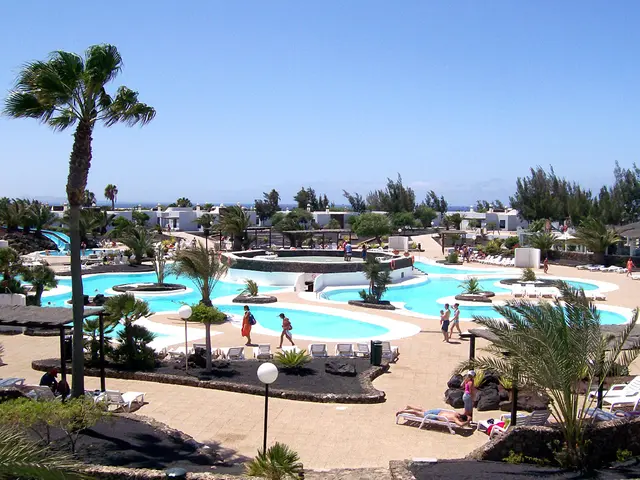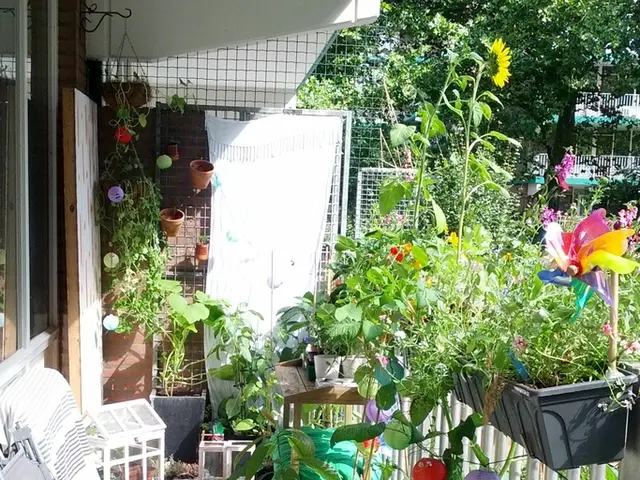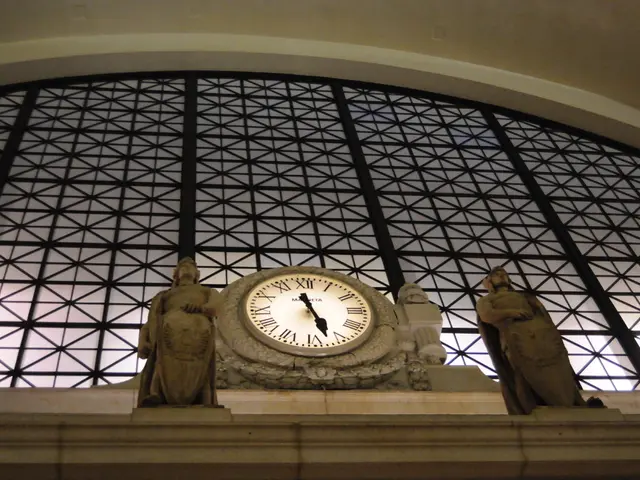Airport Transformations: Unveiling the Travel Hub's Evolving Role as a Destination Experience
In the age of extended layovers, airports are no longer mere transit stations but vibrant destinations where travelers can unwind, indulge, and even work. This shift from utilitarian spaces to lifestyle hubs is a global trend, spearheaded by airports like Dubai International Airport and the upcoming Al Maktoum International Airport.
The concept of slow travel is on the rise, with passengers choosing longer layovers to explore airports or nearby cities. Airlines and airports are capitalizing on this trend, offering curated experiences that transform idle time into engaging moments. Examples include city tours, in-terminal perks, and shopping expeditions. In fact, Dubai International Airport's duty-free shops alone raked in an impressive AED7.9 billion in 2024.
Airports are increasingly becoming architectural marvels, rivaling cities in design and aesthetics. Iconic structures like the Rain Vortex at Singapore's Changi Airport or the sleek design of Dubai Terminal 3 showcase the modern ethos of these spaces. These airport masterpieces are also integrated into a city's cultural branding, reflecting its unique identity.
Comfort is another priority, with airports offering hotel-like amenities such as spas, nap pods, and high-end dining options. Emirates' First Class Lounge in Dubai International Airport, for instance, features private suites and a spa with complimentary massages. This transformation of terminals into boutique hotels ensures travelers arrive refreshed rather than frazzled.
Entertainment is also growing in importance, with airports offering cinemas, ice-skating rinks, and gaming lounges. DXB's Zen Garden and media lounges keep travelers engaged, while other airports like Incheon in South Korea and Los Angeles International feature live music pop-ups. The blend of global and local offerings creates a dining and shopping experience that feels like a destination itself.
Wellness is another key focus, with airports prioritizing mental and physical well-being. Natural lighting, meditation zones, and eco-friendly food courts are becoming common features. Sustainability is also a priority, with Dubai International Airport aiming to achieve 50% carbon neutrality by 2030. Al Maktoum International, under construction, targets LEED Gold certification with energy-efficient designs.
For Dubai's business community, airports are more than just transit points; they're workspaces. Dubai International Airport offers ultra-fast Wi-Fi, co-working lounges, and private meeting rooms. The rise of "bleisure" travel, blending business and leisure, is shaping airport design. Airports are becoming extensions of the office, tailored to the needs of the modern professional.
For Dubai residents, airports like Dubai International are more than just a means to travel; they're a source of pride. The modern travel ethos is shifting, focusing on the journey itself rather than just the destination. As airports like Al Maktoum International continue to redefine what's possible, your next favorite destination might not be a city-it might be its airport.
References:[1] "DXB Handled 92.3 Million Passengers in 2024". (n.d.). Retrieved June 8, 2023, from https://www.dubaiairport.ae/en/media/press-releases/pages/dxb-handled-92-3-million-passengers-in-2024.aspx[2] "A Guide to Rome's Fiumicino Airport". (n.d.). Retrieved June 8, 2023, from https://www.atlasobscura.com/places/a-guide-to-romes-fiumicino-airport[3] "Why More Travelers Are Turning to Long Layovers". (2023, March 15). Retrieved June 8, 2023, from https://www.afar.com/magazine/dont-skip-your-layover[4] "Delta's Sky Club". (n.d.). Retrieved June 8, 2023, from https://www.skyclub.com/[5] "Lufthansa First Class Lounges". (n.d.). Retrieved June 8, 2023, from https://www.lufthansa.com/us/en/services/loungefinder/loungefinder?&menuid=header_lounges&placecode=FRA
- In the future, airports could transform into not just business hubs but cultural destinations, showcasing a city's unique identity through architecture and art.
- The technology sector is investing heavily in AI and CGI to create virtual tours and experiences, allowing travelers to explore new cities and cultures without leaving the airport.
- The economy is set to benefit from the rise of extended layovers, as airports generate significant revenue from duty-free shopping, entertainment, and hospitality services.
- With the increasing integration of technology in daily life, airports are constantly innovating to provide smoother and more efficient travel experiences, from biometric check-ins to smart luggage tracking.
- Sustainability and eco-friendly practices are becoming essential aspects in the design of airports, as they work towards reducing carbon footprints and promoting a healthier environment.
- As traditional office spaces evolve, airports are becoming more compatible with remote work and flexible lifestyles, offering comfortable workspaces equipped with high-speed Wi-Fi and productive amenities.
- The home-and-garden industry is exploring the potential of airport green spaces, such as rooftop gardens and indoor plant walls, to improve air quality and create a calming environment for passengers.
- Travel, sports, and fitness enthusiasts can also look forward to a wide variety of activities at airports in the future, such as sports courts, gyms, and wellness centers to keep them active during layovers.
- As the lifestyle hub model spreads across the globe, airports are expected to play a significant role in shaping the city's culture and economy, attracting both business and leisure travelers.
- The shift in travel trends and the evolution of airports offer exciting opportunities for startups and entrepreneurs, particularly in sectors like dining, retail, and wellness, to innovate and create the new normal in air travel.








